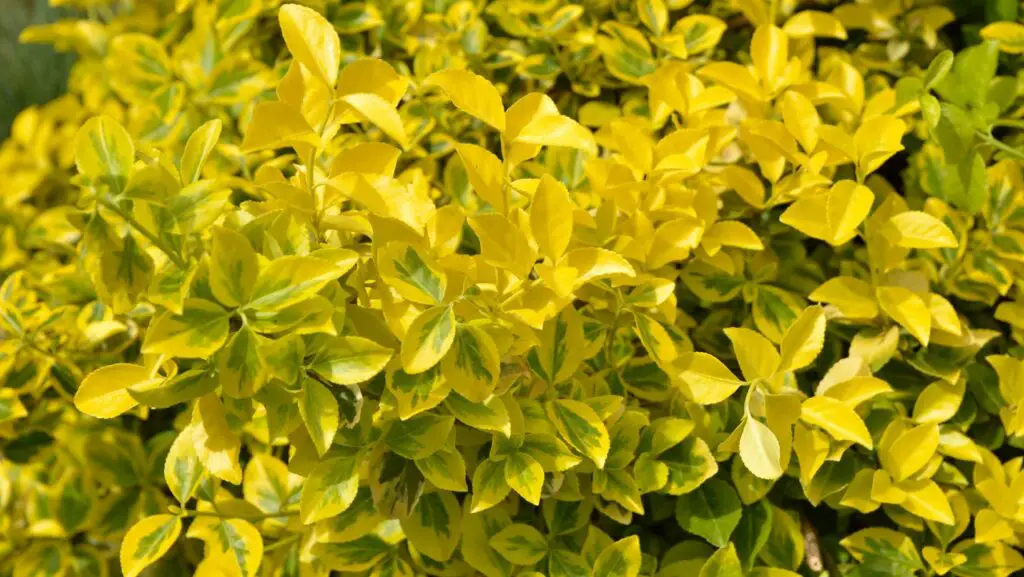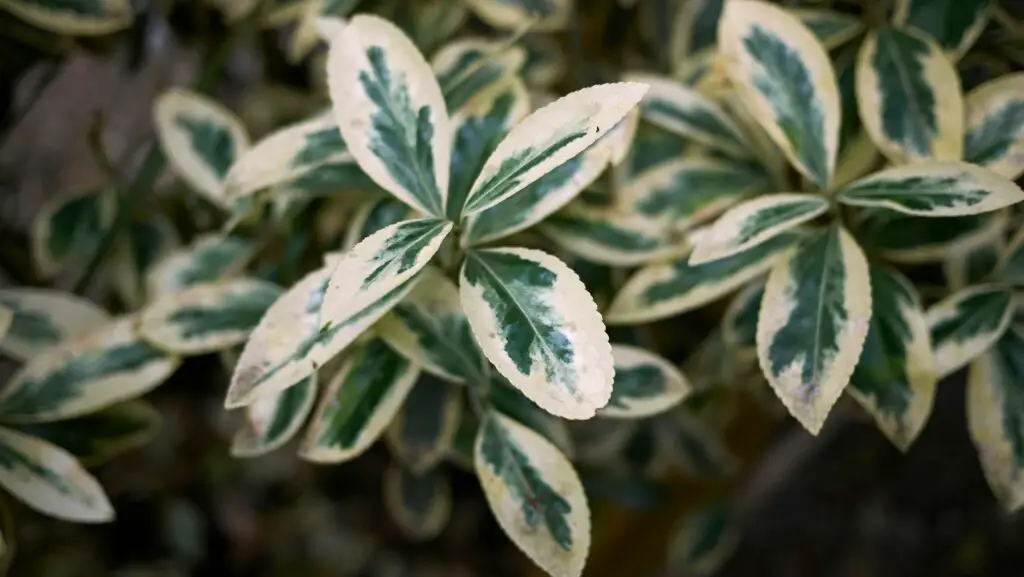
Euonymus is an important group of plants. To the old species used for decades, many improvements have been added. All of them have their foliage as an attraction; some of them attract attention because of their fruits.
In this article, I have gathered for you all the information about euonymus plants, their main characteristics, and what you need to know to plant and grow them.
Characteristics of the euonymus plant
| Scientific name | Euonymus spp. |
| Family | Celastraceae |
| Origin | China, Japan, Siberia |
| Foliage | Evergreen or deciduous |
| Flowering | May-June, Insignificant |
| Rusticity | -15°C (-59°F) |
| Exposure | Sun |
| Soil | Garden soil |
The euonymus trees are evergreen or deciduous shrubs, from a few dozen centimeters high for the creeping species to 4 or 5 m for the largest.
The leaves are green or variegated; some of them turn red in autumn and give these shrubs all their decorative interest.
The vegetation is developed and the growth is fast.
How to grow a euonymus plant
Plant euonymus shrub in any type of soil, preferably fresh, rich and drained. To exalt the color of the variegations, prefer full sun; half-shade is possible. They support well the sprays.
The only noticeable enemy, but almost always present every year, is oidium, also called “white”, caused by several strains of fungi. It must be fought as soon as the vegetation starts to grow again in spring, as soon as the first symptoms appear.
Pruning is essential every year to maintain the density of the vegetation. In February-March, remove a few centimeters by cutting always above new branches.
For hedges, repeat the action in May-June and August-September.
Tip: If you have neglected pruning, you can recut your euonymus plant at any time, even severely; they always start again with numerous buds.
How to grow a euonymus in a pot
A euonymus shrub can be grown in a 40 cm pot for several years, with regular fertilizer applications between March and September.
Where to plant a euonymus shrub
It can be planted in hedges to create a beautiful background, or it can be planted in an isolated spot to provide a focal point. It also looks great in rock gardens and can be planted in pots if space is limited.
Our selection

You must choose between deciduous and evergreen, taking into account the height.
Deciduous euonymus plant
They are especially interesting for their red foliage in autumn.
- Euonymus europaeus, 2 to 2.50 m, has a rounded shape and flexible branches. Its fruits look like bishop’s caps. It is offered mostly in its more fruitful ‘Red Cascade‘ variety. It is recommended for clay and limestone soils.
- E. alatus, and especially its variety ‘Compactus‘, also high (1,50 m) but more collected, gives beautiful fruits in summer and an intense red foliage in autumn.
- E. grandiflorus ‘Red Wine‘, 1.50 to 2 m, with purple foliage from April to autumn, can be semi-hardy in mild climates.
The evergreen euonymus varieties
- Among the creepers, consider E. fortunei ‘Emerald Gold‘, 30 to 40 cm high, with bright green foliage edged with bright yellow; Emerald Gaiety’ and ‘Emerald’n Gold‘, similar to the previous one but with silvery creamy white foliage, turning pink in winter; ‘Harlequin‘, 20 to 30 cm high by 60 cm wide, with bluish green foliage spotted with creamy white; and ‘Sunspot‘, 30 to 40 cm high by 60 cm diameter, with green leaves spotted with light yellow.
- The japonicus species provides medium to large euonymus plants: the most classic, E. japonicus, 3 to 5 m tall, with green foliage, used in hedges; ‘Président Gauthier‘, 2 to 3 m tall, with light green leaves largely edged with creamy white; ‘Aureomarginatus‘, identical to the previous one but with golden yellow variegation, used more in beds.
- In pots, grow E. japonica Compacta‘, green, with dense vegetation, which you will maintain by some superficial pruning with hand shears, and E. japonica ‘Microphyllus‘, with small green leaves, especially for small pots and in window boxes.
In a nutshell
The Euonymus genus includes a wide variety of garden plants that require little maintenance. A portion of them are evergreen and thrive with proper sun exposure, fertilizer, and occasional pruning. They can be used in a variety of settings, from front lawns to woodland gardens. The diversity of Euonymus plants makes them a prime candidate for any garden renovation because of their hardiness.

Hi!
I am the guy behind Theyardable.com. I grew up on a homestead and I am here to share the knowledge I have and things I learn while living in the countryside.
